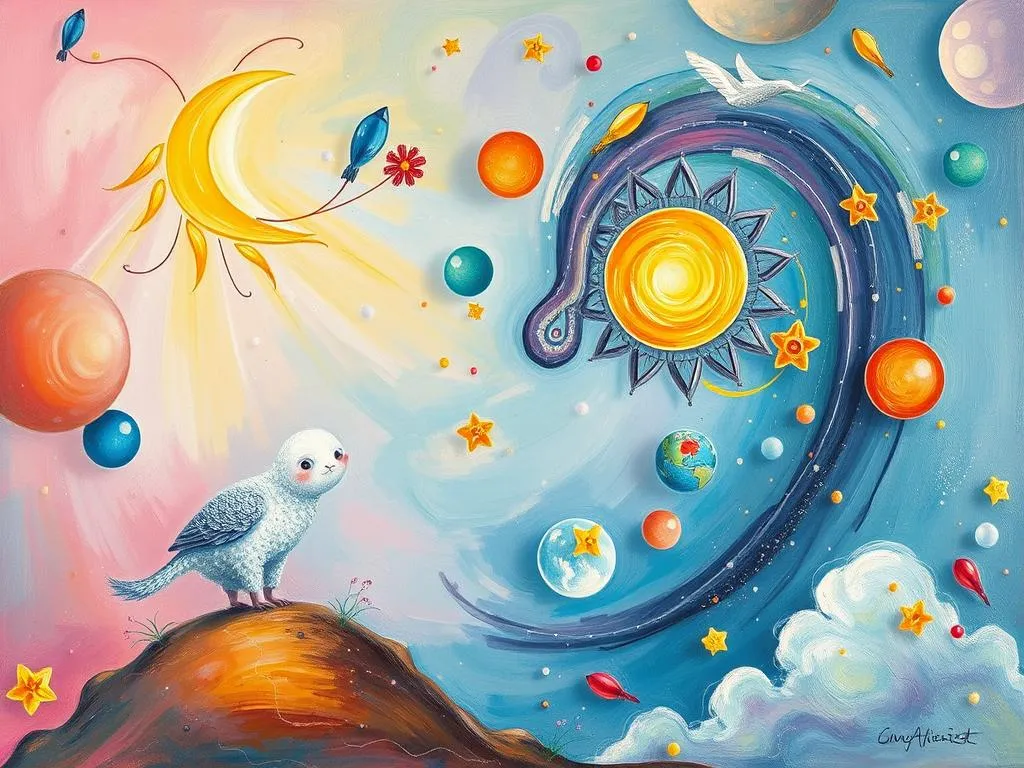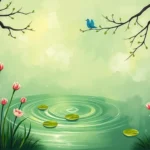
Have you ever woken up from a dream, heart racing, and felt the lingering weight of its message? Dreams often carry profound meanings that weave together our subconscious fears, desires, and experiences. They can be like hidden letters waiting to be decoded, offering insights about our waking lives. Understanding dream symbolism can shine a light on your inner world, revealing truths you might not yet be ready to face. So, grab a cozy blanket and a cup of tea, and let’s explore the fascinating world of dreams together.
In this article, we’ll delve into the rich tapestry of dream interpretation, exploring how symbols are not just personal but also cultural, psychological, and universal. As we navigate this realm, you’ll discover practical insights that can help you reflect on your own dreams and perhaps even gain clarity in your waking life.
The Language of Dreams: Decoding Symbols
Dreams speak a unique language filled with symbols that often evoke deep emotional responses. At their core, these symbols represent aspects of our subconscious mind. For instance, a snake in a dream may symbolize transformation or danger, depending on the context of the dreamer’s life and feelings. Psychologically, Carl Jung posited that dreams serve as a bridge to our unconscious, revealing hidden desires and fears.
From a cultural perspective, the symbolism of certain dreams can vary significantly. In many Native American cultures, snakes embody not just danger but also healing and transformation, reflecting their connection to the earth and spirit. In contrast, in Western contexts, snakes are often associated with deceit or fear, stemming from ancient biblical narratives. This contrast highlights how cultural backgrounds shape our understanding of dream symbols.
Modern psychology emphasizes that dreams are not merely random images but are interwoven with our emotional state. For instance, dreaming of falling might not just signify fear of failure; it could also reflect feelings of insecurity or loss of control in your life. A common misconception is that all dream symbols have a universal meaning. While there are recurring themes, each person’s experiences and emotions uniquely color their dreams, requiring a personalized approach to interpretation.
Dreamscapes: Stories That Shape Us
Let’s explore various dream scenarios that illustrate the intricacies of dream symbolism. Each scenario provides a glimpse into the emotional landscape of the dreamer, shedding light on their waking life challenges.
1. The Endless Staircase
You find yourself climbing an endless staircase, each step feeling heavier than the last. Frustration mounts as you realize you’re not making any progress. This dream often signifies personal struggles or feelings of stagnation. You might be facing a challenging project at work or feeling stuck in a relationship. This scenario serves as a reminder to assess your goals and identify what might be holding you back.
2. The Flying Dream
In a dream, you soar through the sky, feeling the wind beneath your wings. The exhilaration is palpable as you glide above landscapes, free from constraints. Flying dreams often represent a sense of freedom and empowerment. They can signal a breakthrough in your life—perhaps you’ve finally overcome a fear or made a significant decision. This dream invites you to embrace your accomplishments and recognize your potential.
3. The Lost Child
You wander through a crowded marketplace, searching for a lost child. Panic rises as you call out their name, feeling a deep sense of urgency. This dream can symbolize your inner child and may reflect feelings of neglect or fear of losing something precious in your life, such as your creativity or joy. It urges you to reconnect with your inner self and nurture those parts that may have been overlooked.
4. The Inescapable Chase
You’re running through a dark forest, feeling the breath of an unseen pursuer on your neck. Your heart races as you try to evade capture. This classic dream scenario often illustrates feelings of anxiety or avoiding a problem in your waking life. Instead of running, it may be time to confront what you’re afraid of, whether that’s a difficult conversation or a decision you’ve been avoiding.
5. The Flooding Room
You find yourself in a room filling with water, panic rising as the water reaches your chest. This dream can symbolize overwhelming emotions or situations in your life that feel out of control. The water may represent feelings of sadness, stress, or anxiety. Reflecting on what aspects of your life feel overwhelming can provide clarity on how to manage these emotions.
Navigating the Dreamscape: Your Path to Growth
Understanding your dreams is not just about deciphering symbols; it’s also a pathway to personal growth. By reflecting on the messages encoded in your dreams, you can gain valuable insights into your waking life.
Key Psychological Insights
-
Emotions are central: Your dreams mirror your emotional state. Pay attention to the feelings you experience in your dreams as they often guide you towards understanding your waking emotions.
-
Dreams are a reflection of your life: They often mirror your thoughts, concerns, and desires. Observing recurring themes can provide clues about what you need to address in your life.
-
Personal symbolism matters: While some symbols carry universal meanings, your personal associations with symbols are crucial. Take time to consider what certain symbols mean to you, based on your experiences.
Reflection Questions
To deepen your understanding of your dreams, consider these reflective questions:
- What emotions do I frequently feel in my dreams, and how do they relate to my waking life?
- Are there recurring symbols in my dreams? What do they mean to me personally?
- How can I address the themes or feelings presented in my dreams to foster personal growth?
Action Steps
-
Keep a dream journal: Write down your dreams as soon as you wake up. Note the symbols, emotions, and any insights you gain. This practice can help you identify patterns over time.
-
Practice mindfulness: Engage in mindfulness or meditation to explore your inner thoughts and feelings. This can enhance your self-awareness and help you connect with your subconscious.
-
Seek professional guidance: If your dreams are particularly distressing or you’re struggling to interpret them, consider speaking with a therapist or a dream analyst who can provide deeper insights.
Surprising Facts
-
Cultural significance: In many cultures, dreams are viewed as prophetic or spiritually significant, often serving as guidance for decision-making or future events.
-
The role of REM sleep: Most vivid dreams occur during the REM (Rapid Eye Movement) stage of sleep, which plays a crucial role in memory consolidation and emotional processing.
As you reflect on the hidden messages within your dreams, remember that they are not mere flights of fancy; they are echoes of your inner self seeking to communicate with you. Each dream is an opportunity for insight, understanding, and growth. So the next time you awaken from a vivid dream, take a moment to ponder its message and consider how it might illuminate your path forward.
Embrace the journey of self-discovery, for within the dreamscape lies a treasure trove of wisdom just waiting to be uncovered.







